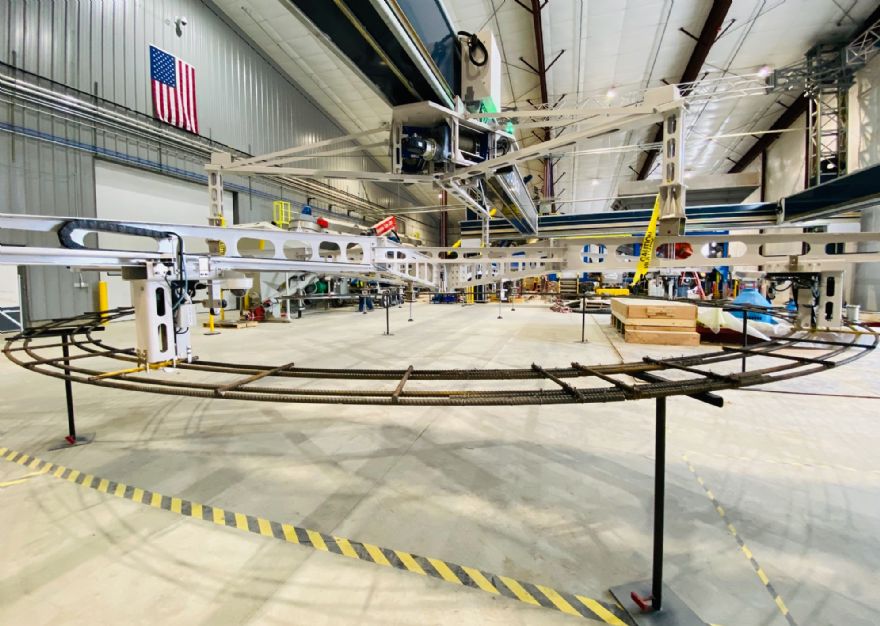
Inside a cavernous warehouse in Bergen, a village just south of Rochester in New York State, engineers from
GE Renewable Energy and their partners are using one of world’s largest 3-D printers to form the bases of wind turbine towers from high-tech concrete, and thereby ‘break through bottlenecks’ that currently limit the size and power of onshore wind turbines, with the aim of achieving more efficient wind farm designs.
Christopher Kenny, senior engineering manager for emerging technologies at GE Renewable Energy and the leader of the facility, says that the wind industry has evolved tremendously in recent decades. “However, there are physical limits on how powerful land-based wind turbines can become. Larger generators will require taller, stronger and larger towers. If we don’t do anything, we are going to run into a roadblock.
“To make a wind turbine tower today, builders bring prefabricated steel tubes to the location on flatbed trucks and weld them together on-site, but transport limitations means such tubes means are limited to about 14ft in diameter — any larger and they become too wide to fit on many roads.
“However, by 3-D printing the base of the tower from concrete on location, wind farm builders will be able to make it wider, and strong enough to support a taller and more powerful turbine. The method could also unlock new locations for wind generation.”
The 3-D printer Mr Kenny and his team are testing in Bergen consists of long trusses and beams connected at right angles in a way that resembles a concert stage at a music festival. Electric motors attached to the beams move the printing nozzle in three directions and allow it to print concrete structures up to 20m tall.
Mr Kenny added: “Attaching a prefabricated steel tower to a concrete base 20m high could help wind farm designers build turbines with towers reaching 140m. Taller and more powerful turbines could help increase a wind farm’s annualised energy output (AEP), an important industry number that describes a wind turbine’s efficiency.
“The hub height is critical for AEP gain, and today it is typically not fully optimised, as wind is typically stronger and steadier higher off the ground. Moreover, since the printed concrete base can vary in height, 3-D printing could allow turbine heights to be optimised to the local terrain. When you consider very large wind farms where the terrain and wind changes, we are currently limited on how we can vary the height of the turbine to maximise the site layout.”
GE will test the 3-D printing process indoors this year and plans to start printing outside next year, with the goal of demonstrating a full-scale outdoor tower segment. The ultimate goal is to demonstrate the ability to deliver cost-effective tall towers, and to do that the GE team is looking for a viable site for installing a prototype turbine that will generate 2-3MW.